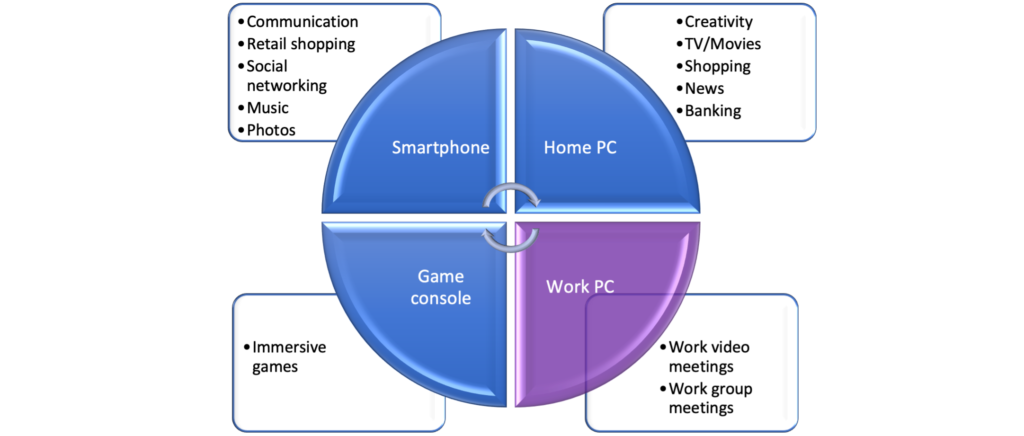Dan Ness, Principal Analyst, MetaFacts, September 13, 2021
Which device gets chosen for which activities?

Dan Ness, Principal Analyst, MetaFacts, September 13, 2021

Which age groups use voice-enabled wireless speakers the most? Online Americans use wireless speakers to use voice commands with Siri or Alexa or to listen to music, and the penetration rates vary substantially by age. This MetaFAQs reports on the penetration of voice-enabled speakers by age group among adults the US. This MetaFAQs uses results from the TUP/Technology User Profile 2020, which is TUP’s 38th annual.
Dan Ness, Principal Analyst, MetaFacts, November 9, 2020 Are notebooks really that different from each other? Do users use a Windows notebook differently than users of Apple MacBook? This MetaFAQs looks at the regular activities being done with both types to address this question. About MetaFAQs MetaFAQs are answers to frequently asked questions about technology…
Dan Ness, Principal Analyst, MetaFacts, March 15, 2019 Streaming subscriptions are popular, with 69% of online adults actively using at least one type of free or paid digital media subscription. Penetration is highest among younger than older American adults. Nearly nine in ten online adults in the US aged 18-34 use a digital media subscription….
Consider the device juggler – emailing with a PC, then a smartphone, and then with a tablet or different PC. Do they seem more talented or rare than most of us? Our research shows they are not that unique. Ninety-six percent of those with 2 or more connected devices do at least one type of personal activity across multiple devices. However, the range of multi-platform activities is so broad and unique to the individual user that no single type of activity is cross-platform for the majority. This defines the demand for smoother user experiences.
Is an iPad a computer? Is a Microsoft Surface a tablet? What about Chromebooks – how do they fit into the user’s uses? The major tech marketers are working to shift perceptions, such as Apple’s positioning of the iPad as a computer. Even though perceptions do shift buying decisions, user innovation and inertia are a force to reckon with. Many users have already pioneered ways to use their devices. We went straight to the users to see if they’re using tablets and notebooks the same, using iPads differently from Android tablets, and Windows notebooks from Chromebooks. Our basic hypothesis is that perceived differences, if substantial, can be confirmed by measuring user behavior.
iPads are more useful – based on users doing more with them. A higher share of users of recently-acquired home-owned tablets utilizes their Apple iPads for more of the major tablet activities than users of new Windows tablets or new home Android tablets. This is based on results from the MetaFacts TUP 2018 survey, conducted among 14,273 respondents across the US, UK, Germany, India, and China.